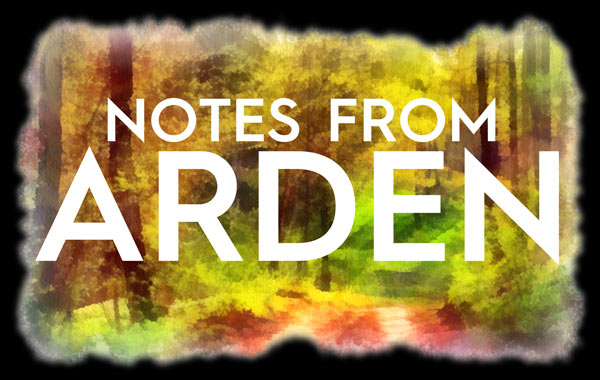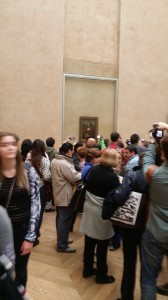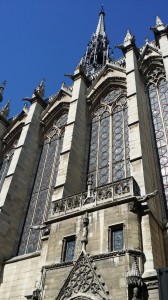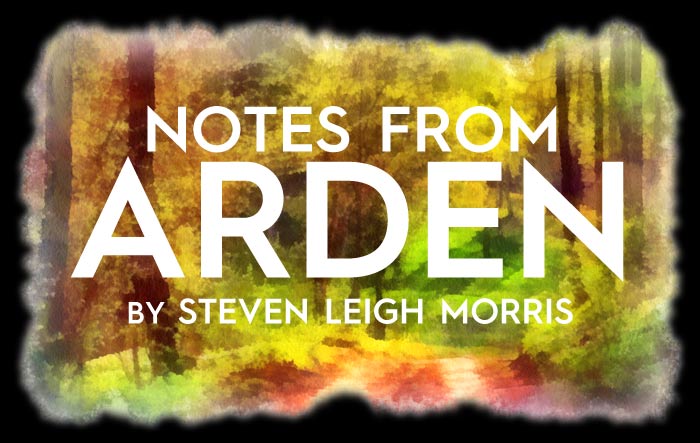NOTES FROM ARDEN
BY STEVEN LEIGH MORRIS

Making a Hashtag of the Arts
Editor’s Note: Stage Raw takes no responsibility for the dubious veracity of large portions of this article/short-story.
As mentioned before in this column, the National Endowment for the Arts reported on the disturbing, declining attendance in the arts – both the visual and performing kind – though there’s no decline in arts participation. In “The Revolution Will Not Be Televised” (see this week’s Features), John Steppling posits a number of reasons that our theater, at least, has become irrelevant, adrift from its lack of a serious purpose. The NEA’s findings would seem to support some of Steppling’s arguments – that if theater dared even to approach its mandate of yore, to challenge prevailing values with expressions of dissent – the young (who traditionally fire up the cauldrons of dissent) might show some interest in something other than Selfies and other forms of art created by themselves and their friends on their Android phones.
And this is why Stage Raw, your living arts journalism laboratory, has been busy trying to go beyond the same-old-same-old of arts journalism by setting up a series of international audience-artist-participatory programs, since the line between artists and audiences is growing increasingly blurry.
Here’s the theory: use our 21st century technologies (Twitter, Skye, live-streaming, bla bla bla) in order to get people from all over the globe to participate in Stage Raw-sponsored initiatives that will, in the long-run, encourage the participants – audiences and artists — to unplug their devices for an hour or two in order to sit or stand in a space, breathe the air of that space, and partake of what somebody else has created, and to do so with something resembling what used to be called an attention span. As Steppling would say if he were asked, “You can’t have a revolution if nobody’s paying attention.”
Stage Raw set out to discuss this idea with Anthony Byrnes, commentator for KCRW FM, who, from LA last week, complained that Stage Raw wasn’t doing anything new, ironically on the very week Stage Raw was in Europe holding meetings in order to launch, in the coming weeks, some of the aforementioned initiatives – discussed in greater detail in last week’s Notes From Arden, which Anthony hadn’t yet gotten around to.
So Stage Raw took its trusty MacBook Pro laptop into the Basilica of the Sacred Heart in Paris’ Chateau Rouge district. This is an ancient and beautiful church, with marble columns and cavernous vaulted ceilings, sculpted saints peering down. To our amazement, a chorus of nuns was singing some kind of chant in Latin, and the voices billowed up and around the columns and stained glass. And it occurred to Stage Raw in this moment that, yes, a performance is very much defined by the space it exists in. Stage Raw sat on a bench in the back, opened the MacBook Pro laptop and attempted to Skype Anthony, as we’d arranged. Anthony didn’t pick up, so @StageRaw tweeted back to Los Angeles the sheer majesty and sacredness of what was happening. Unfortunately, the Internet connection was weak, and the glow from the computer upset a guard who asked Stage Raw to turn the thing off.
By this time, back in L.A., Board Member @MichaelSeel had leapt to Stage Raw’s defense, tweeting that the new site would be part of a revolution in arts journalism. “I’ll be sure to duck,” Anthony tweeted back, by which time Stage Raw was at the Louvre Museum, in the hall of the Italian masters. Mobbed. Arts attendance declining? Not in France.

There she hung, Mona Lisa, small frame, big reputation, enigmatic smile, the whole thing, but Stage Raw couldn’t get close because of the rows and rows of people – layers really – separating Lisa from the eyes of this beholder with the incessant flashing of iPhone cameras, as though they could actually capture The Real Thing.
Whatever happened to postcards?
So Stage Raw found a bench, next to a lonely Botticelli, and pried opened the MacBook Pro once again, jumped onto somebody’s wobbly Internet connection. Anthony still didn’t pick up on Skype. Stage Raw then read on Twitter that Anthony and Michael were still going at it.
“Show me,” @TheaterThoughts (Anthony) tweeted. @StageRaw tweeted back, “Anthony, I can’t talk now, I’m at the Louvre. Give us time. We’re just having meetings now. This will all unfold in the coming weeks and months,” along with other related notes.
Because of Twitter limitations, it took three tweets to say that much. And that was without adding the hashtag #LAThtr. By which time, a security guard came over and asked Stage Raw to please close the computer. We think he said please. Maybe not.
Later that afternoon, Stage Raw found itself in the upper sanctuary of the Palace of Sainte-Chapelle – a 13th century church with fabled stained glass depictions of the Bible’s books. This was created some three centuries before the Gutenberg printing press triggered a revolution, bringing scrolls down to size and encouraging a culture of literacy. Two thoughts crossed Stage Raw’s mind: that in the 1200s, people absorbed stories that they all discussed around their medieval water coolers entirely through pictures enshrined in stained glass within church walls. This was the predecessor of the comic book, the cinema and, in many ways, the kind of international theater festival that features projected slides and puppets that don’t really need to say much to make their point.

The other thought was that all this beauty, these looming cavernous ceilings, were on the upper sanctuary, where only the privileged were admitted. The other 99% were consigned to the lower sanctuary with a ceiling about the same height as your standard one-bedroom apartment, and where there were almost no stained-glass stories to behold. So the idea of the arts being both elitist and subsidized has a long and tortured history.
The Internet, you see, can change all that. Well, maybe some of it. Stage Raw was back that night in the upper pavilion listening to violinist Bertrand Cervera as he stood on a platform stage underneath all that stained glass, to perform an intermingling of Bach partitas and sonatas for solo violin. The sun was down, so the stained glass had turned dark. Floodlights beamed up from the floor, giving a ghostly sense of the church’s looming scale. The acoustics gave the violin a perfect, resounding echo. There were a couple of young people in the crowd, but mostly the audience was older. Even if we’d had our Macbook Pro and an Internet connection plugged into Skype or Twitter, they would have proven useless. Because the Internet, and even a three-camera television recording system, doesn’t breathe the air. It flattens the sights and the sounds of a sacred place, where so much art that matters unfolds. Sometimes, you just have to be there. And everyone is entitled to be there, if that’s what they want. They shouldn’t be barred by sanctimonious theologians, or by ticket prices, or by a culture that keeps barking about how much more fun and entertaining quirky diversions are, how much more relevant they are to who we are.
How can we use our democratizing technologies to urge people who may not care, or may not know, that it’s worth showing up in a sacred space, to figure out, viscerally, who we are by a deeper understanding of who we were?
This week marks the premiere of Mindy Farabee’s occasional column on historical performance artifacts, Vaulted Ambitions, with a look back on a 1970s performance troupe The Waitresses, that took L.A. by storm. Also, Deborah Klugman has an interview with Ensemble Studio Theatre/LA’s artistic director Gates McFadden.
Oh, yes, when Stage Raw got back to its Paris apartment, it had received a tweet from @TheaterThoughts. Anthony said he understood that our fledgling site held the promise of being more than the same old same old. @StageRaw tweeted back that Twitter is a crappy forum to discuss all this, and Anthony replied, “Hallelujia!”
Looking back on the Gothic spires of Sainte-Chapelle, and recalling what had transpired within them the prior evening, Stage Raw had to concur.

